Róh Veneer: Wearable Art
During our final semester at college, I pursued a minor in fashion design, and as part of the wearable art course, we had the opportunity to experiment with crafting a cement bustier. This was also a group project of three of us, Animesh, Dheeral, and myself. The entire process was very interesting!
The process began with brainstorming innovative concepts on the materials and design elements to create an unconventional garment piece. We listed down all the options possible.
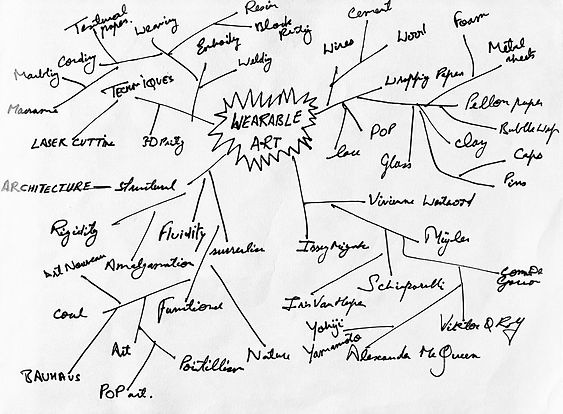
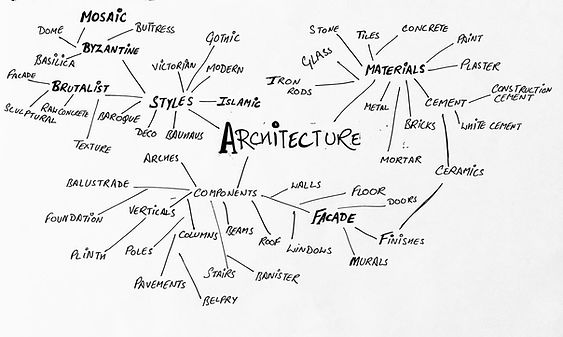
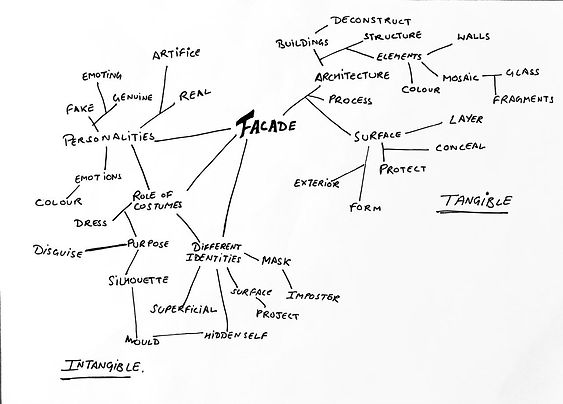
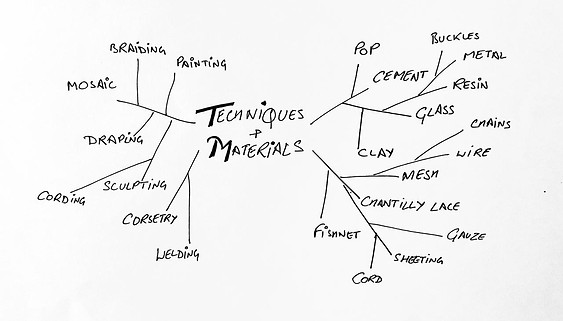
Following the brainstorming session, we started working on all the details of the design boards. For this, we made physical boards. We initiated by deliberating on the collection's desired aesthetic, subsequently delving into the theme, and then finally developing an inspiration board keeping this in mind.
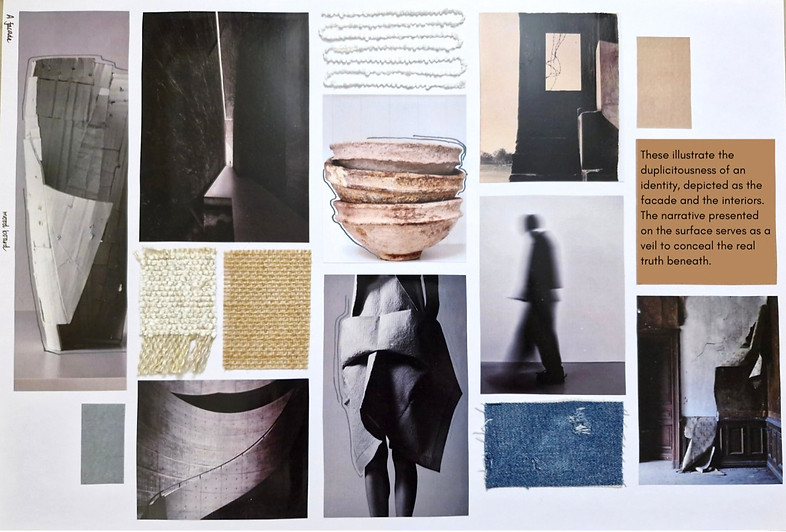
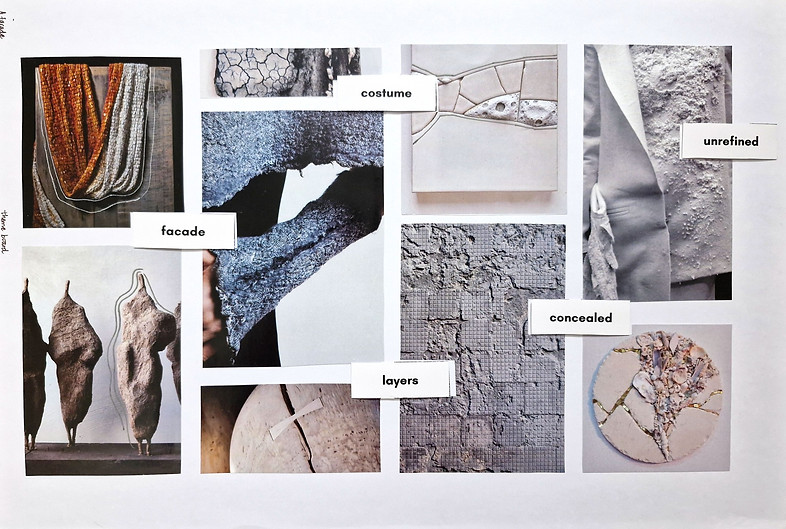
Costumes have aided people in honing different personas and visors from times immemorial. It enables us to put up a facade that conceals all that is within, thereby allowing us to showcase the identity and attributes we choose to; 'Róh veneer'- meaning ''raw facade'' is the essence of the collection. Drawing over this shared trait of clothing and architecture, the theme is thus, an exploration of the confluence of different architectural styles and techniques from the Brutalist and Byzantine eras, realized in the form of wearable pieces.
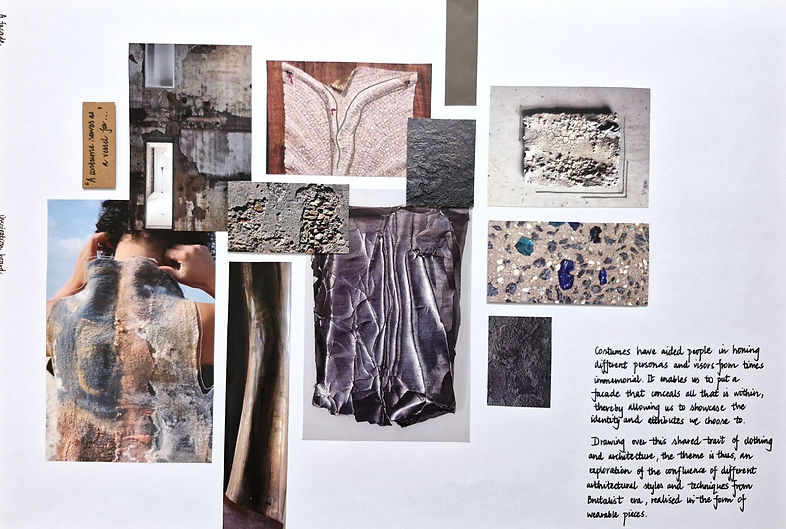
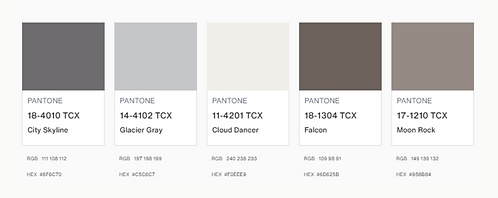
We extracted essential elements from our research, aiming to integrate them into our final work. Influenced by Schiaparelli's and Mugler's sculpted, avant-garde, and dramatic aesthetics, known for their experimental corsetry with unconventional materials while maintaining a harmonious balance with fabric usage. Additionally, we drew inspiration from Seurat's pointillism, reflected in the mirror work intricacies on the corset. Lastly, we adopted Pollock's drip technique, infusing it into the draped skirt design.
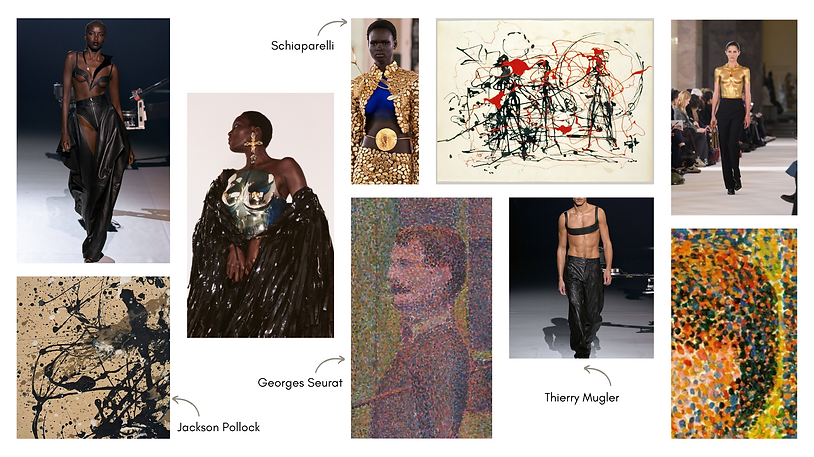
Since textures play a pivotal role in our process, we explored various textures using materials such as cement, fabric, glass, resin, gauze and plaster of Paris (POP).
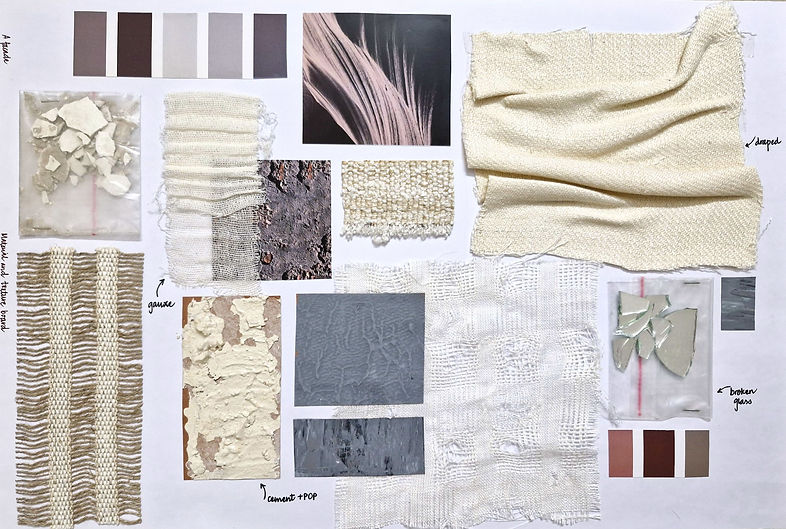
Simultaneously, our process of trial and error to perfect the creation of a durable cement cast suitable for crafting the final corset was going on. And we achieved it finally! The process was really fun. We then meticulously followed the outlined procedure below for our final corset.
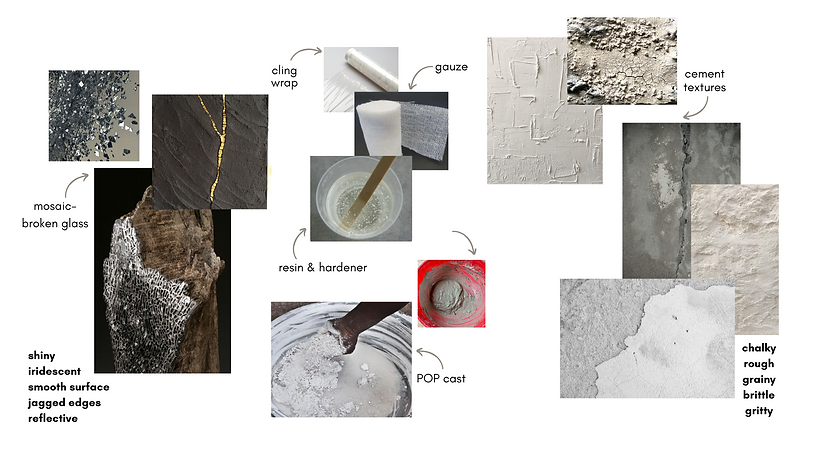
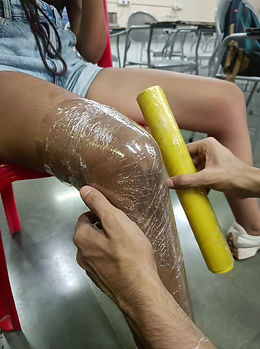
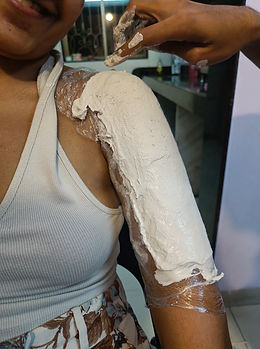
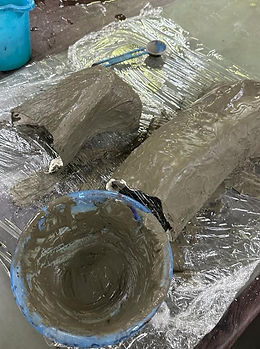
Subsequently, we proceeded to create swatches by experimenting with mirror mosaic techniques. For the initial two swatches, we explored a draping technique, reinforced with resin, and adorned with scattered broken glass fragments. The final swatch features a denim mosaic, where glass pieces are affixed using resin, ensuring they stay.

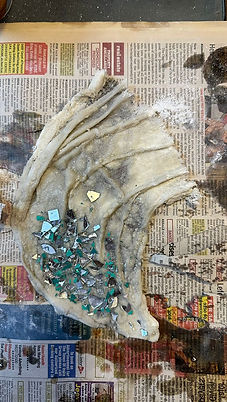
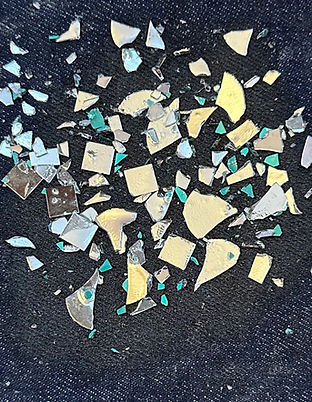
Gradually, the corset began to take form.
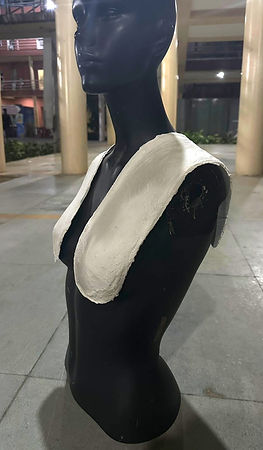
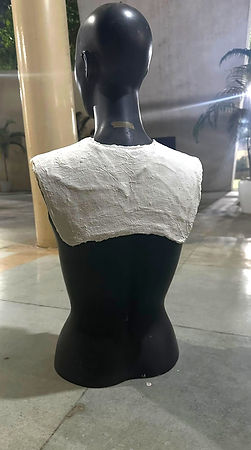
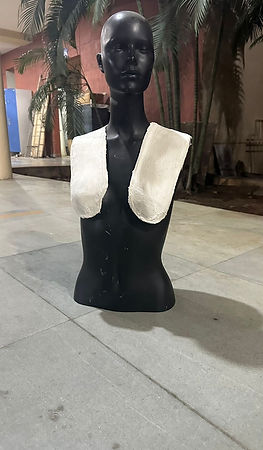
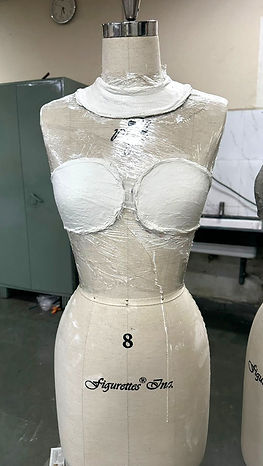
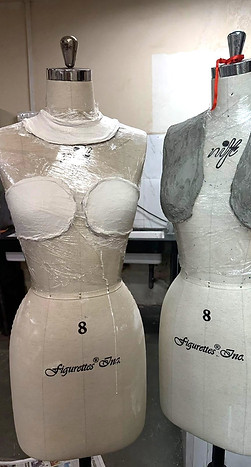
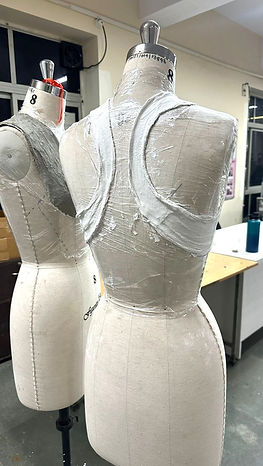
Finalised the below silhouette.
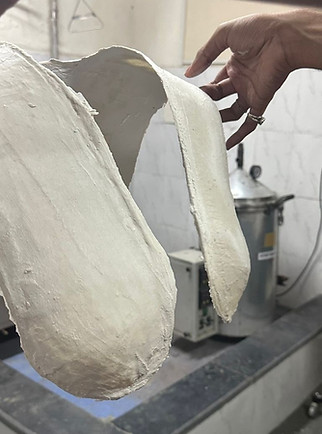
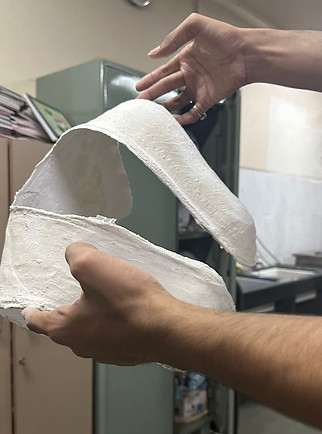
Next, we collectively brainstormed diverse forms to complete the silhouette, exploring both draped and structured styles to enhance the whole look.
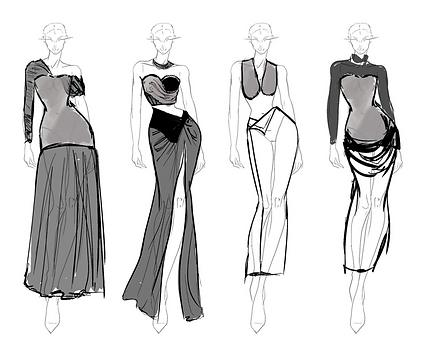
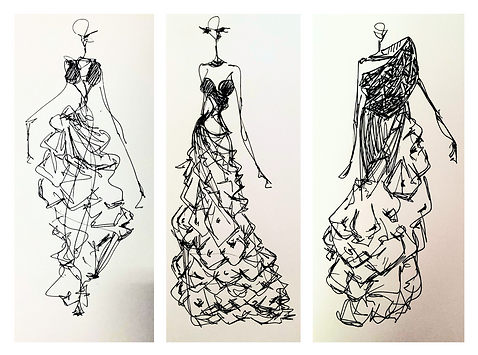
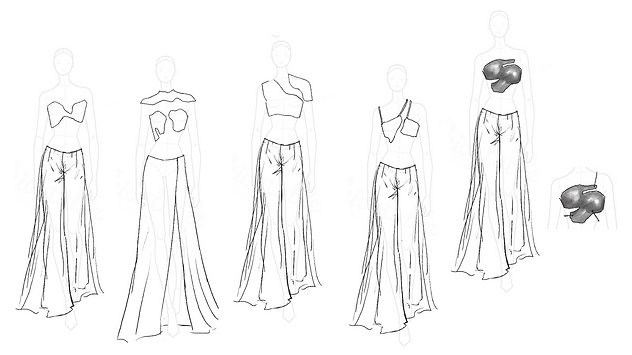
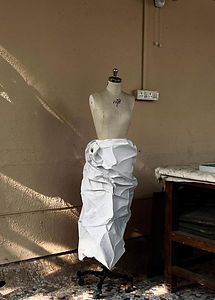
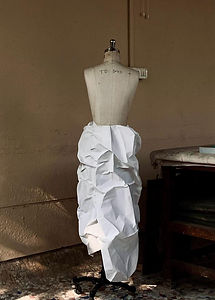
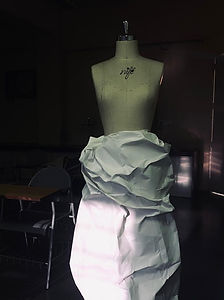
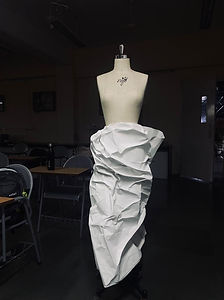
Following this, the bottom was left for which we decided to use silk crepe. We were going for a draped structured look for which we infused crepe with fusing so that we could mold it as we wanted it. This technique imparted a resemblance to crumpled paper, enhancing the overall aesthetic.
In parallel, the final silhouette of the corset was cemented and then I started gluing the pieces of mirror on it. It symbolizes the dichotomy between fragility and resilience. It represents the idea that even though individuals may present a polished exterior or facade but every individual has flaws and imperfections. This also translates to the juxtaposition being shown through the corset.
Later, after the drape of the skirt, we started with a splattering of paint. The splattered shades of grey and black on the skirt symbolize the nuanced complexities of human identities, emotions, and experiences hidden beneath outward appearances.
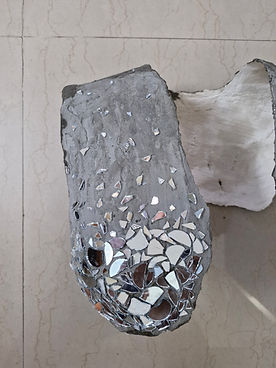
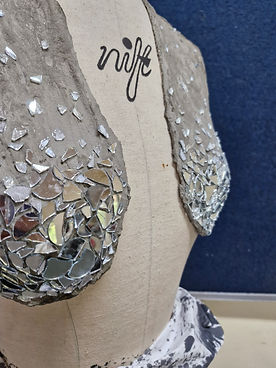
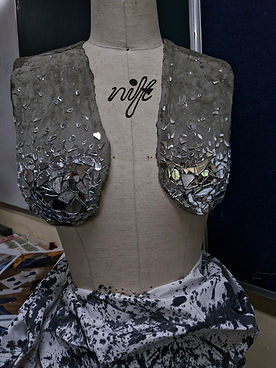
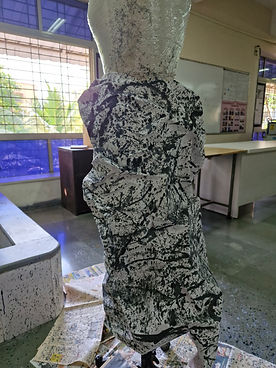
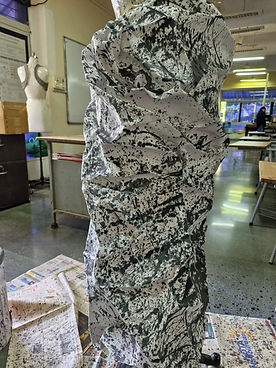
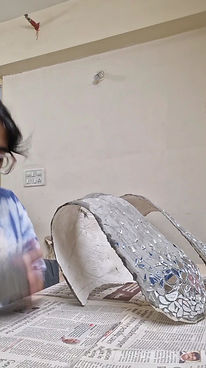
The look put together communicates the process of individuals constructing facades to conceal their flaws, eventually realizing the multifaceted nature of every personality—with aspects we embrace and others we struggle with—embracing the acceptance that imperfections are a natural part of being human.

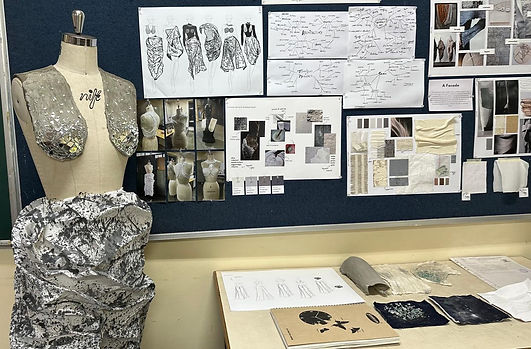
Finished piece!

